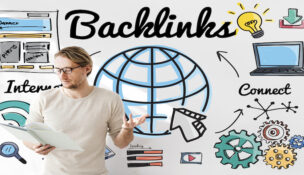How to improve your bottom line with branding
Esty Atlas //June 29, 2010//
It was one of those “aha” moments when I read, “Poetry is when you make new things familiar and familiar things new.” A great definition and teaching tool.
The challenge of advertising has always been and will always be how one taps into human psychology in ways that resonate with the consumer (which is itself always evolving). By successfully positioning the identity and value of a product or company, perceived value goes up. But our market is also besieged with generic no-name, non-advertised products. How do these measure up?
Let’s look at a couple of examples and explore how good branding can improve your bottom line, no matter what your product or service is.
On the low end: Bandages vs. Band-aids. Target (love that store) sells a box of sheer, generic latex free adhesive bandages in an 80-count assorted size box for $1.67. The cheapest name brand, on sale, is $2.31. Yes, I know, for some, SpongeBob SquarePants (or some other cute design) is a must-have, but I’m talking about a basic bandage. What really influences consumers to spend nearly a third more, in this case, 64 cents, for a brand name bandage? Then, consider how that 64 cent difference (or roughly 36 percent extra) translates into big money for more expensive items.
Perception equals markup, right?
What about things like the ever-changing digital cameras. What influences consumers to choose the Nikon over Casio or Olympus over any other brand? It turns out price is not always the main factor. For the advanced shutterbug, features, functionality, user experience, resolution quality and even camera size are the main attractors. But for the bulk of mainstream, that intangible reputation one manufacturer has over another generally drives the purchase.
And who drives the reputation? Bingo! Bounce right back to the smart advertising, marketing, and public relations campaigns of companies like Apple where a new product unveiling has become a monumental event. Who would’ve imagined (not that many years ago) consumers; you, me, friends of ours, would stand in line, for hours; even camp out overnight to be the first ones in the store to buy the virgin iPhone. Is Apple giving away their hotsy totsy iPhones, iMacs, iPads, iWhatevers for FREE?
You’ll recall the first generation phone sold for about $600 and every few months thereafter comes the next higher gig capacity with more apps, whistles and bells phone. Back to the store goes the first buyer and in stream new buyers. I walked by the Apple store in the mall yesterday, and it’s packed with consumers, even at dinner time on a weeknight. When branding is believable among consumers, it feeds on itself so long as the new products deliver on their promise.
Good marketing creates intangible value. Vice Chairman of Ogilvy Group, one of the country’s top advertising giants, Rory Sutherland said, “Advertising adds value to a product by changing our perception, rather than the product itself.” Especially in a world of too many options and people with too little time, ordinary stuff gets ignored.
Consider why so many people look forward to the commercials in the Super Bowl. We know they’re going to be anything but ordinary. Consumers today want and demand extraordinary.
The Wall Street Journal recently reported Apple’s market value since 2000 has ballooned from $15.6 billion to $221 billion, passing behemoth Microsoft in market value! Say what? The talk is Steve Jobs success in transforming Apple highlights Microsoft’s failure to capitalize on new technologies like wireless and digital music.
At the same time, Apple’s success with the iPod and iPhone both came at the expense of Microsoft’s efforts in those areas. Apple’s market penetration has nearly caught up with Microsoft’s overall revenue. “The wind is at Apple’s back,” says the hardware maker. Who woulda thunk it!
That’s why companies invest in developing brand recognition, slogans, catchy jingles, and high-impact advertising campaigns that will stick in a consumer’s mind. Over time, the product becomes more and more familiar to consumers, and studies have shown people are often more comfortable buying products that are familiar versus unfamiliar alternatives. This brand creation and consumer loyalty can also be driven on a smaller, grassroots scale as well.
So take time to evaluate what your brand identity is (or is lacking). When marketing your products or services, consider the fundamental opportunities that change human behavior. Artistically: start with the definition of poetry.
{pagebreak:Page 1}
Esty Atlas is the public relations director for Hughes & Stuart Marketing located in Greenwood Village. She is a four-time Emmy Award-winning writer, creative producer, marketing consultant, media trainer, and co-author of “Roadrunner Marketing: Strategic Secrets You Wish You Knew.



























